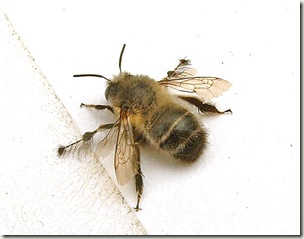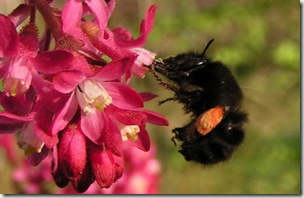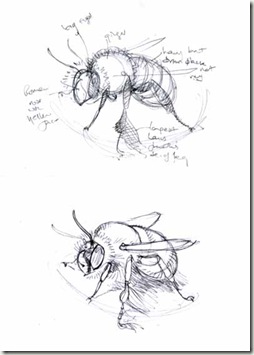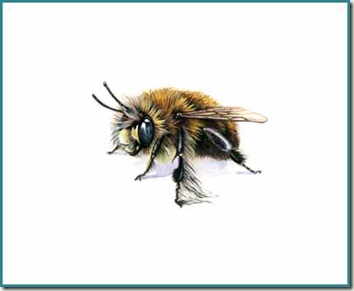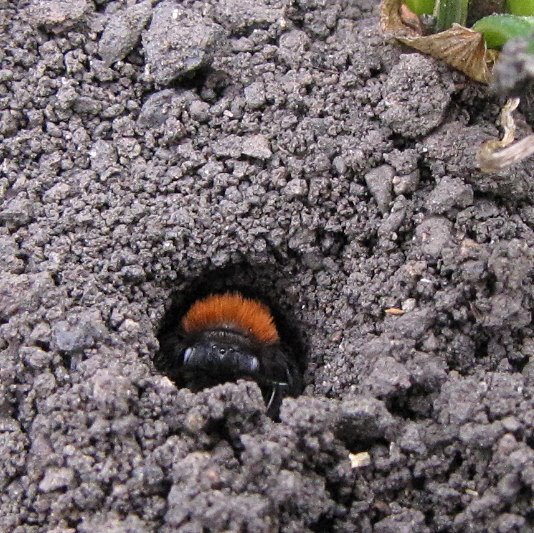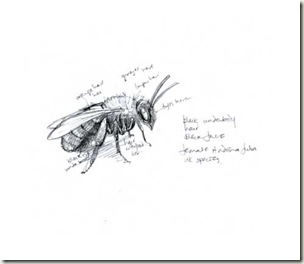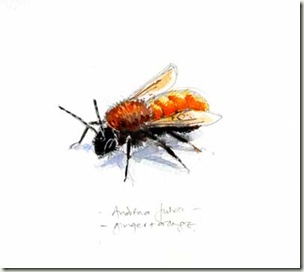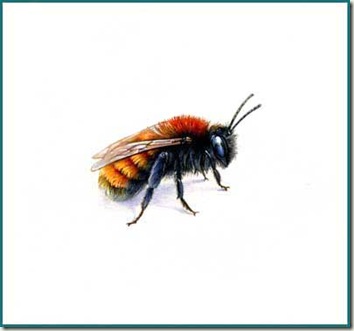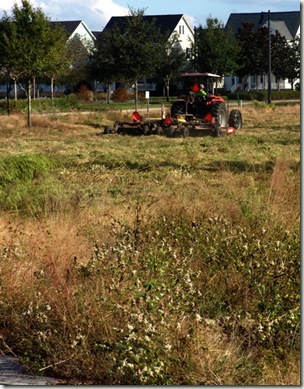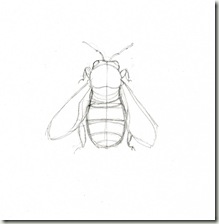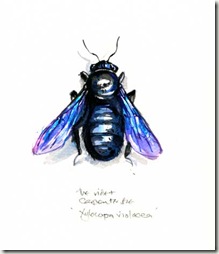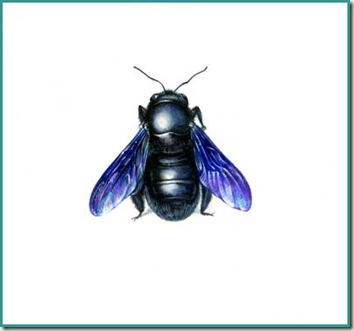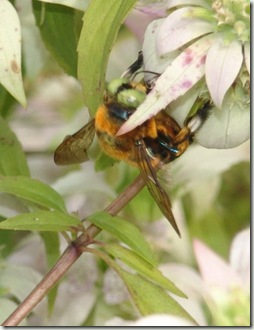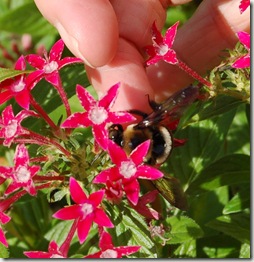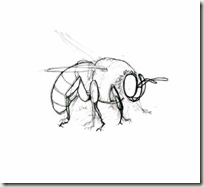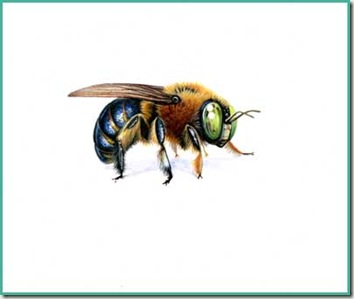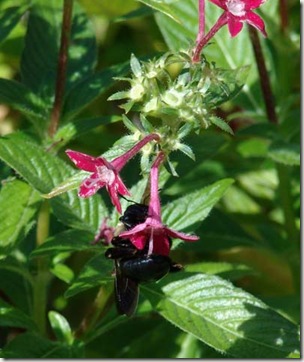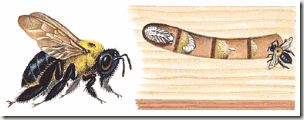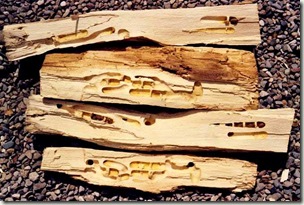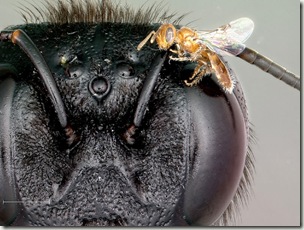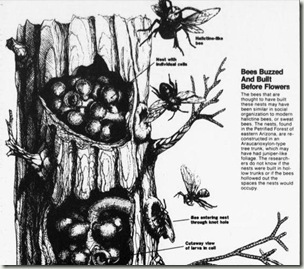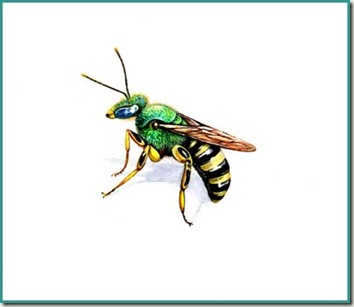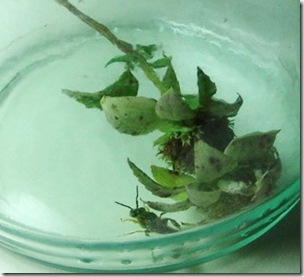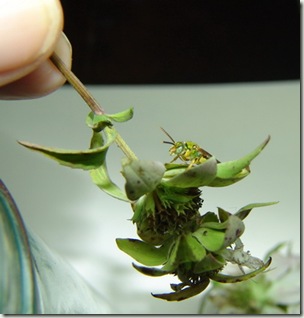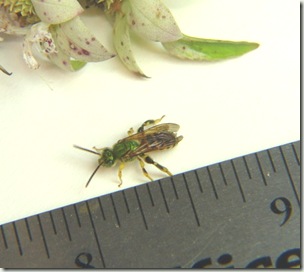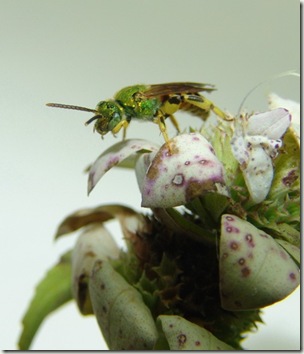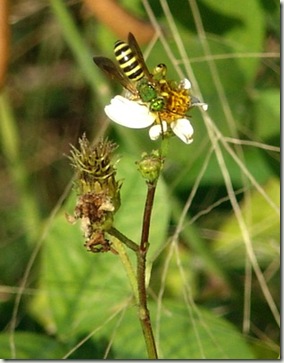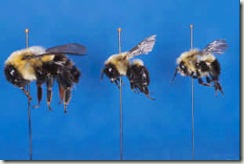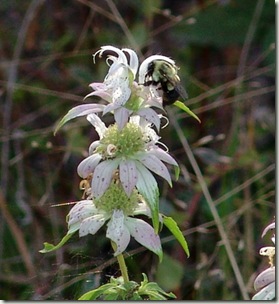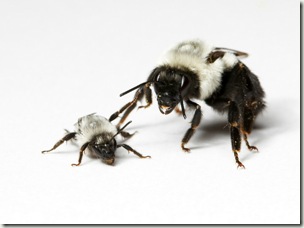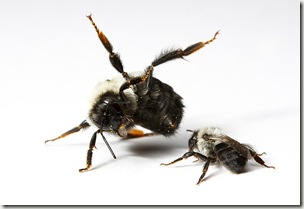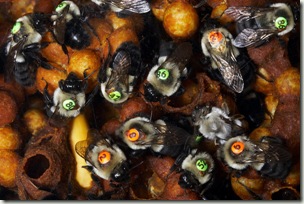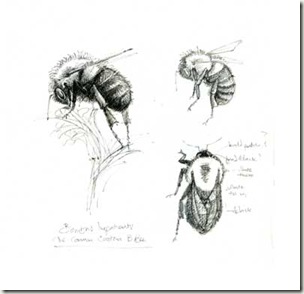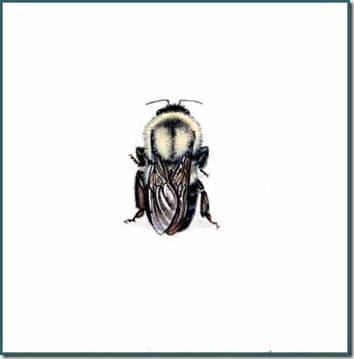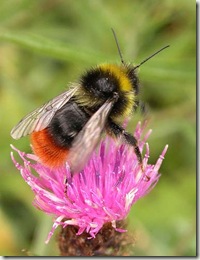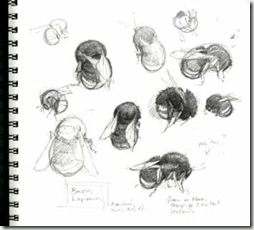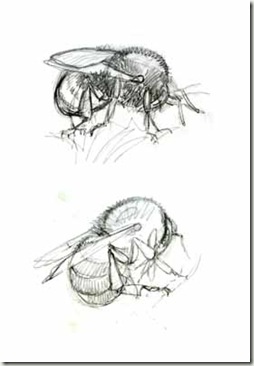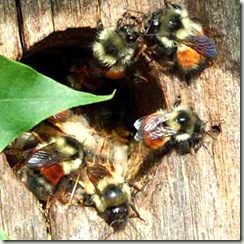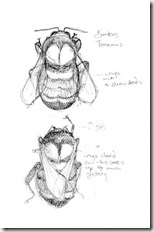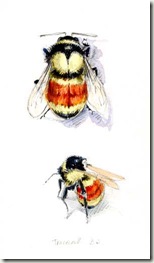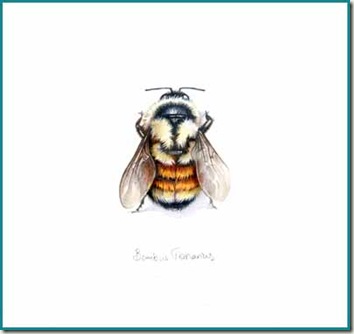If ever a bee belonged in the world of the fairies this is it. The amazing Hairy Footed Flower Bee. I have painted the male, with its plumed feathery feet, its Roman nose and its equally endearing Latin name, Anthophora plumipes.
I had not really given much thought to bees’ feet before I started this project but they are wonderful things. See the plumes on the second leg..
photo by Jeffdelonge for Wikipedia here
Anthophora is another large bee genus with over 450 species worldwide. They vary enormously. Some are known as digger or mason bees and make wonderful elaborate homes with mud.
This particular species is an early April bee and particularly long tongued, so able to make the most of tubular flowers such as the spring-flowering Lungwort, Pulmonaria, Comfrey, Symphytum, Cowslips, and the dead nettle family Lamium.
Adrian Knowles, Hymenoptera Recorder for the Suffolk Nature Society has this to say:
“At about 13mm long they are a little smaller than most bumblebees and they fly with very quick wings in a swift and darting flight, frequently hovering in front of flowers and so have a rather different “jizz” to their larger relatives. They are perhaps more reminiscent of rotund hairy hoverflies in their behaviour.
They nest in tunnels excavated in steep, dry soil banks and .occasionally within the crumbling mortar of old masonry, as do several other solitary bees.
Amazingly, they emerge from their pupae in late summer but remain in their sealed nest cells until the following spring – about 6 months spent as an adult just standing still!
The females are all black, with yellow/orange hairs on her hind legs (you may need to look carefully to avoid confusion with bees bearing yellow pollen on their hind legs).
The males are strikingly different, with dark orange/brown hairs towards the front of their bodies, giving way to black hairs anteriorly. “ ………not forgetting those hairy feet!
from Suffolk’ s Box Valley (UK) Nature Website here which will also take you to some interesting books on Suffolk’s Natural History.
The reason for the extravagant hairiness is, of course all to do courtship.
If you are a female Hairy Footed Flower Bee (but without the hairy feet as the females don’t have them), I guess you will appreciate the tender ministrations of your beau as he wafts his hairy feet over your antennae, transferring his own brand of irresistible aftershave as he does.
It’s not quite my idea of romance, but then I am not a bee …yet. Gordon Ramel of the excellent Gordon’s Solitary Bee Pages has another theory …
As the females are notoriously skittish, it is possible that the male covers his mate’s eyes with those hairy feet to calm her down, (or to knock her out with that aftershave)
He tells us more about this game little bee
“The males are territorial and tend to guard a home range which contains either, the sorts of flowers the females like to visit, or a site suitable for nesting.
The male patrols around his home range spending time at each patch of flowers and or nest site chasing off intruders. He is very serious about this and defends his chosen resources from all comers whether they are a competing male bee or not.
To drive intruders away from his range he accelerates straight at them very quickly and rams them with his head, he can knock out insects much larger than himself this way”
You will also find links to some very good illustrations on this page, and Gordon’s Earthlife site is fun and informative and about much more than just bees.
Here is a photo of the lovely black female Hairy Footed Flower Bee with her orange coloured back legs..
The gorgeous female HFFB by rybaros from a Polish entomological site which has excellent insect photos here
This particular species Anthophora plumipes, is most common in the Europe but according to the excellent Discover Life site, after introduction in Maryland they can now be found throughout the Washington DC region.
Look out for them if you live in this area. I spent far too long researching and reading about these bees. Sometimes it takes a long time to collect even a small amount of accurate information. I am going to put a list of useful bee sites on the sidebar soon.
However deciding how to draw this bee was not too difficult. Of course I had to include the feet, that Roman nose and it does have lovely big eyes. I am also getting a little more familiar with bee anatomy so I made a couple of quick sketches just to get the pose right and then got on with the painting.
__________________________________________________________
Bee No 9: The Hairy Footed Flower Bee, Anthophora plumipes

